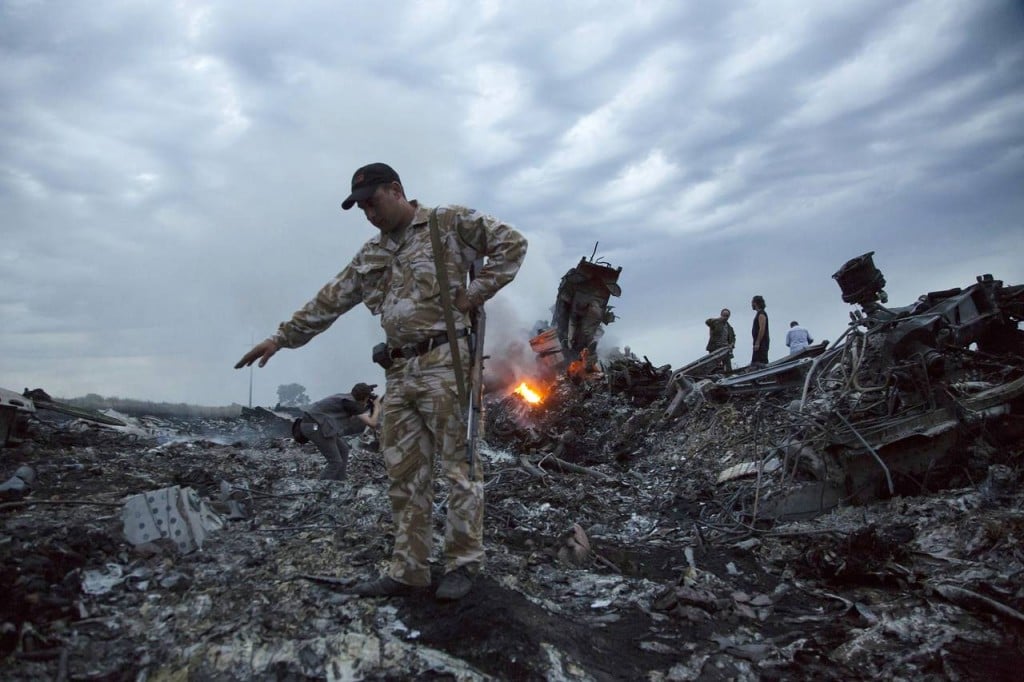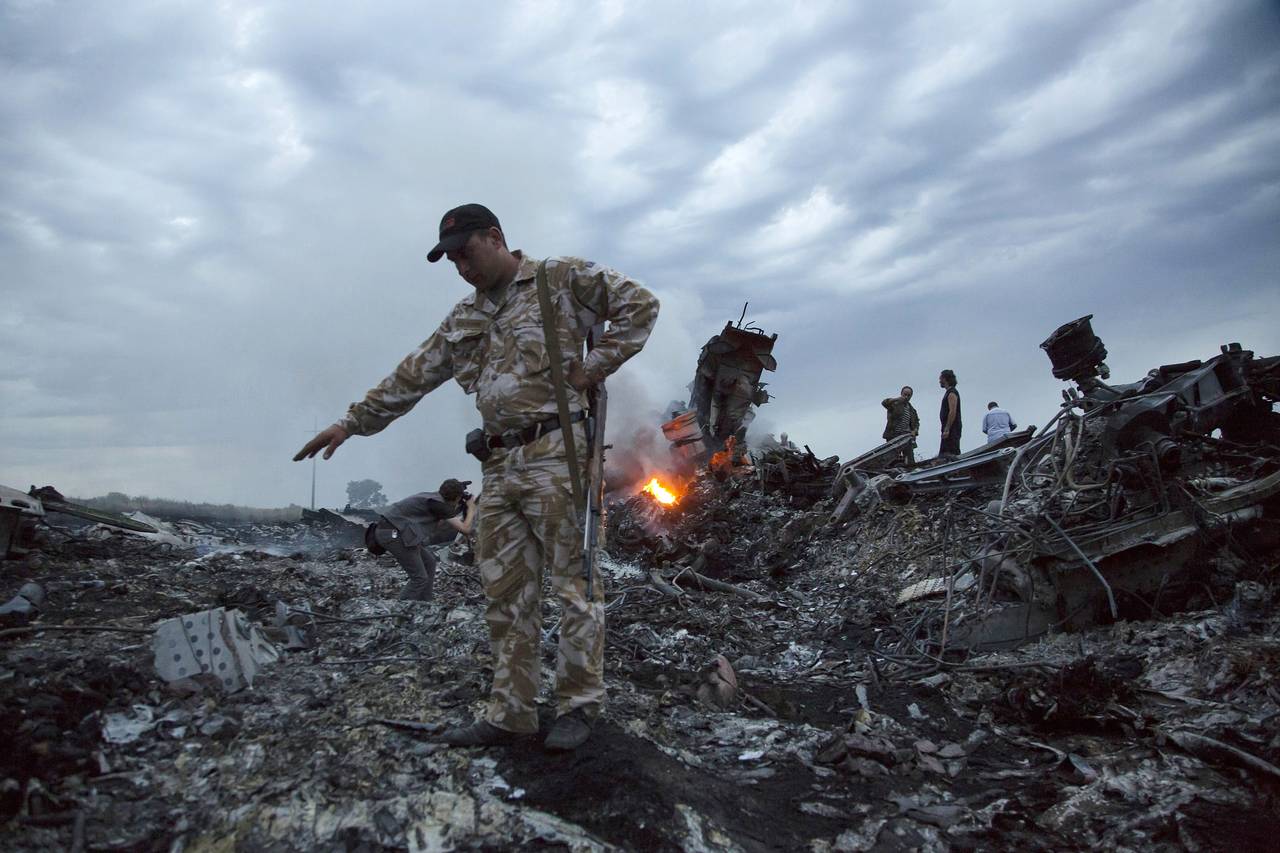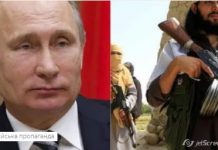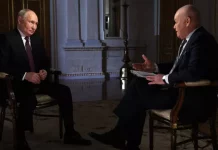
For the West, the downing one year ago of Malaysia Airlines Flight 17 underlined the brutality of Moscow’s hybrid intervention in eastern Ukraine. In Russia, the downing is still living large on television screens, blamed squarely on the Ukrainians—with the possible connivance of Western secret services.
Within hours of the crash on July 17, 2014, Russian state television began to spew a jumble of explanations for the tragedy, all of which fingered Kiev and absolved Russia and pro-Russian rebels in Ukraine of guilt.
Theories included an attack from a Ukrainian fighter jet, a Ukrainian surface-to-air missile, or a botched attempt to kill President Vladimir Putin, whose presidential plane had passed near Ukraine hours earlier. Such stories still abound, with some embellishments.
“Everyone believes that Ukraine is responsible, and that has not changed,” said Sergei Markov, a pro-Kremlin political commentator based in Moscow who has lately proposed that the U.S. helped plan the shoot down. That is why, he says, no U.S. citizens were on board. “In the U.S. they know the truth, but they will never tell it.”
In fact, there was one American among the 298 crash victims.
The ability of Russians and Westerners to see such different realities over the Malaysia Airlines catastrophe exposes a fallacy of U.S. policy toward Russia since the end of the Cold War.
After the rise of the Internet and the fall of the Berlin Wall 25 years ago, the West assumed that Russians and Westerners would naturally come to believe the same things. Free access to information would, like the free hand of capitalism, “propel the world toward common beliefs and ways of life,” said Sam Greene, director of the Russian Institute at King’s College London.
“Now we’re finding out that’s not quite true,” Mr. Greene said. “There’s a whole reassessment going on now about what to do about it.”
Russia hasn’t censored its Internet nearly as much as China, so Russians still enjoy mostly unfettered access to information from outside the country, albeit often not in their native language.
How Mr. Putin got Russians to ignore those sources and believe a state-run media that has a tradition of mendacity says a lot about how little Russia has changed since the end of the Cold War — and how some primitive Soviet-era propaganda strategies remain effective.
It also serves as a warning to the West that relations with Russia, now at a post-Cold-War nadir, could stay that way for some time. Boris Nemtsov, a Putin critic and former deputy prime minister who was gunned down outside the Kremlin early this year, said in an interview before his death that anti-American myths and resentment are widespread and would likely linger even if Mr. Putin steps down after his current term expires in 2018, or the term after that, in 2024.
“Putin has eaten the brains of a whole generation of Russians,” he said. “I think it will remain this way at least until he leaves.”
After the CEO of France’s Total oil company — a rare ally of Russia in a time of multiplying economic sanctions and international isolation—was killed when his plane slammed into a snowplow operated by a drunken driver at a Moscow airport, Kremlin commentators suggested the CIA had assassinated him.
In the U.S. and Europe, officials are discussing possible counter-propaganda strategies, but none look easy as Mr. Putin has taken control of all major television and newspapers since his rise to power.
The Kremlin has meanwhile selectively blocked some websites and funds a host of others, making the search for objective Russian news confusing. In the past year Moscow opposition news services have revealed how the government pays beehives of bloggers — so-called trolls — who write under numerous Facebook accounts and identities on newspaper message boards.
Their comments don’t support the Kremlin line as much as attack Western news reporting as biased, suggesting that the truth is unknowable. The mélange of misinformation and conspiracy theory makes any conclusion about world events seem questionable or a matter of opinion.
Television, meanwhile, is a more-focused instrument for persuasion, said Mr. Greene at King’s College. Last year public opinion polls showed that fewer than 5% of Russians thought that Russia or Russian-backed rebels had shot down the Malaysia Airlines flight. The vast majority blamed the Ukraine military.
The rest of the world has largely assigned blame to Russia or Russia-backed rebels.
The putative assassination of Mr. Putin was one of the first theories circulated over Russia’s main state-controlled television station, the First Channel. A commentator explained that Mr. Putin, who was flying home that day from a summit in South America, had flown near the Polish capital of Warsaw about 45 minutes before the doomed Malaysian flight.
The Ukraine military appeared to mix the planes up, shooting down the Malaysia flight by accident, said the commentator, citing a confidential source in Russia’s Federal Transport Agency. Mr. Putin landed safely.
Simultaneously, the same channel put forward another theory, suggesting a poorly trained Ukrainian missile crew shot down the airliner by mistake—as had happened in 2001, when a Russian passenger plane exploded over the Black Sea, killing all 78 on board.
First Channel ran old footage from that catastrophe, showing a Ukrainian leader at the time falsely denying responsibility. [Kiev admitted days later that one of its errant missiles was probably to blame.]
The network also interviewed a supposed military expert as saying pro-Russian rebels today didn’t have a missile that could reach a passenger airliner at cruising altitude.
“Only Ukrainian troops could have destroyed the civilian airliner,” Igor Korotchenko, a Russian defense commentator, pronounced the day of the crash on First Channel.
Today the main debate in Russia is whether a Ukrainian missile shot down the airliner or a Ukrainian fighter jet. The day after the downing, state television aired a Russia Defense Department briefing in which a senior officer suggested that a Ukrainian Su-25 shot down the flight. Ukraine denied it, and pointed out that the Su-25, which was designed to destroy tanks, was built with an unpressurized cockpit and cannot fly high enough to have reached the airliner.
The next day, the managers of Russia’s Wikipedia said there was a flurry of attempts to edit its article about the Su-25, trying to change it to say that the plane could fly at higher altitudes.
By Alan Cullison, The Wall Street Journal





